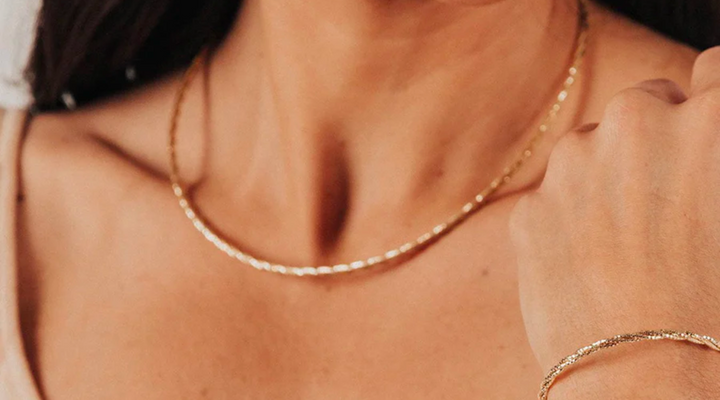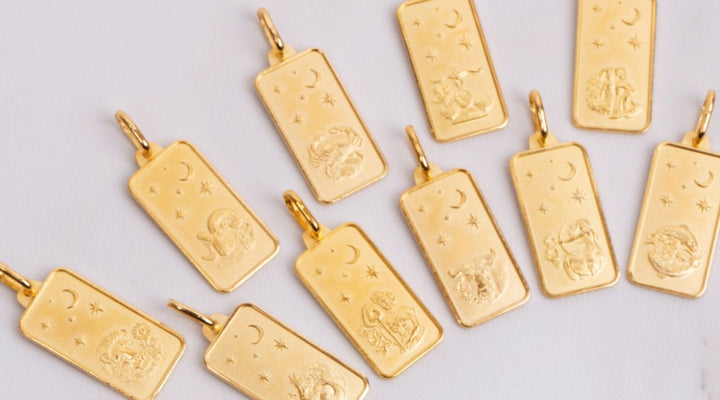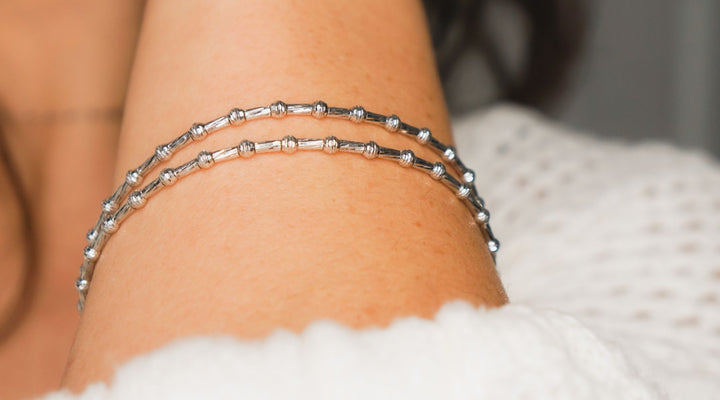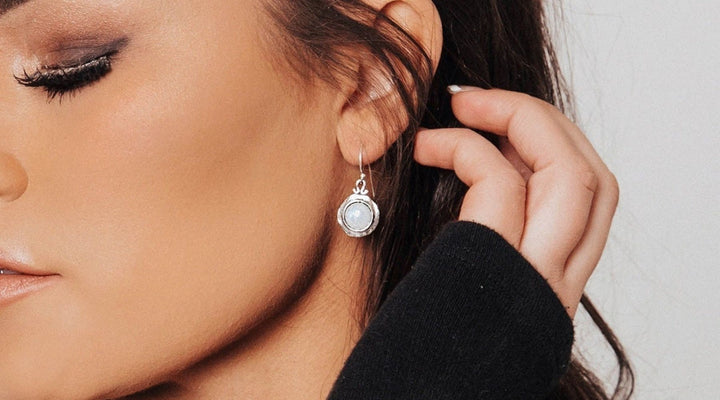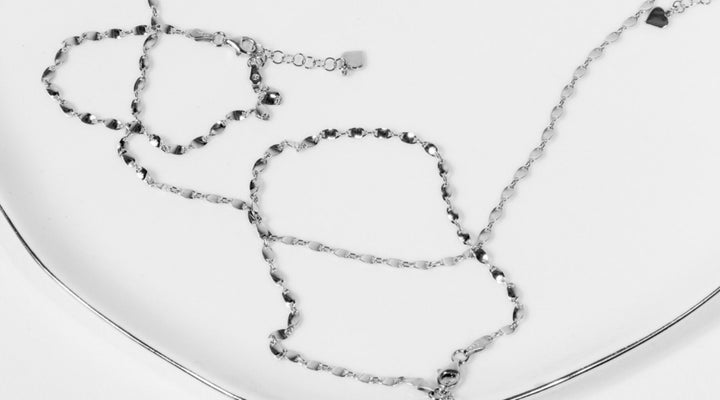The History Behind Roman Glass Jewelry
Posted by Deven Davis on

The History Behind Roman Glass Jewelry
Roman glass jewelry dates all the way back 2000+ years to the ancient Romans (duh), but is now gaining popularity again as it is being unearthed and reborn into the world's most unique jewelry. Read on to learn more about this historical trend.
Keyword(s): roman glass
Humankind has been wearing jewelry for tens of thousands of years. The earliest of which being simple necklaces made of fish bones.
We're unsure of the purpose of this primitive jewelry piece, but it does tell us that we, as humans, have always had an appreciation for our sense of identity.
Beautiful stones have been a staple in jewelry design. Diamonds, sapphires, rubies, and emeralds have been a few of the magnificent compliments to necklaces, bracelets, earrings, and others.
There is a timeless beauty with jewelry.
One such ancient jewelry that has been coming back in a big way is Roman glass.
In this article you'll learn:
- The history behind this jewelry
- How it's become fashionable in the modern world
Let's dig right into this wonderful piece which has stood the test of time.
The History of Roman Glass
To appreciate this type of glass and how it's presented today in modern jewelry -- it's best to understand its history.
Let's take a trip through time...
Some 2,000+ years ago the Romans tapped into their skills and techniques behind metalworking, gem cutting, and pottery to begin creating glass.
These glass items were often valued more than similar productions using precious metals such as silver and gold.
Glass pre-dates Romans by over 1,500 years though through a stroke of luck and positioning in the world.
Ancient Roman glassmakers benefited from the rich lime deposits around the Belarus and Voltrunus River(s) which added small pebbles and shells which changed and affected the design.
Ancient glass objects included:
- Bowls
- Plates
- Bottles
- Cups
And many other common containers while also including windows, mirrors, and jewelry in its own form. It stemmed from a mixture of intaglio and relief cutting.
The Roman Process of Glass Making
An experienced glass cutter would work alongside a glassworker. Glass would be blown and shaped, along with engraved for details, to increase its elegance and value.
Early glass production created opaque features through experimentation, the addition of metals, and removal of impurities allowed Romans to create glimmering works of art in many different hues of colors.
This glass was prized and has even been discovered in archeological sites found as far away from Rome as Japan dating back to the 5th century.
It's believed these glass items were coveted by people of a higher class which made its way well beyond the reaches of the Roman empire.
The early production of glass was reserved for the wealthiest though through glassblowing techniques it reached the hands of common folk.
In modern times this proliferation of glass from the Roman era has produced a unique design due to the production methods along with the very earth it had been enclosed in over thousands of years.
A Treasure from Time
Roman glass today are fragments of the original works.
These fragments could have come from any number of items such as a goblet, jar, or vessel. Israel, being one of the largest glass production areas of the Roman empire, is the epicenter of where most of the glass is now found.
Though it can be found throughout the World having been packaged with other goods being traded during that time.
The designs, too, were particularly interesting since many of these glassblowers and gem specialists were enslaved by the Roman empire -- coming from many locations such as Asia and other eastern provinces.
An expansion of glass blowing techniques and molds allowed Romans to create new shapes, add handles, impressions, and contrast.
By 476 AD the Roman Empire had fallen and its people scattered throughout the World. Archeological endeavors have since unearthed a wealth of glass which has become available to the public often in the form of jewelry pieces.
An amazing journey from glass to jewelry to say the least.
Roman Glass in the Modern World
This type of jewelry has been popular since its introduction.
It has flown under the radar for many individuals throughout the years.
Today, in this modern world, we are rediscovering its beauty.
New jewelry trends and designs have emerged which places this beloved item into a whole new light. The dazzling colors and features of Roman glass compliments any style and placed in a class of its own.
Since this glass does not fall into any particular provenance it has been open for trade -- one of the largest sources being from Israel.
Modern jewelry makers incorporate this ancient beauty to honor its history and elegance. It is often accented with sterling silver or gold.
Pieces available through RomaDesignJewelry include:
- Necklaces
- Pendants
- Earrings
- Rings
Every piece is hand-crafted and set in expertly worked sterling silver. and unique since the particular color and design of Roman glass can be wildly different from the next.
It gives you a sophisticated, upscale and unique look compared to the all-too-common, brass jewelry you're likely finding in fast-fashion stores.
A Vibrant History (and Design)
The stellar aqua blue hue and "cloudy" features are two of the eye-catching draws.
Designs come in many variances since the original Roman glass had been made from other pieces fused into the design.
It is the combination of environment, time, and original production process which has helped create a vibrant luster and speckling. This special glass has also seen its share of color variations with reds, blues, greens, and purples.
The designs are often reflected as:
- Judaic
- Christian
- Messianic
It's the type of jewelry that compliments any skin tone and choice of wardrobe due to its unique setting and subtle expression.
Though, do take care of the jewelry as Roman glass does not bode well when wet. Exposure to water can remove the encrustation and deteriorate its glow.
To think how an everyday item found in ancient times would later become a show-stopper in the modern world...
A Few Final Thoughts
Roman glass has stood the test of time due to its unique look and rich history.
It's the type that is held in the passing down throughout generations. A romantic gesture to the recipient.
It is a wonder to learn the rich history of this glass. Even now, it's a big part of our modern society.
Its purity and beauty will keep it a true treasure for many thousands of years to come.
Own a little piece of history and bring history to life by shopping our vast selection of hand-crafted Roman glass jewelry.
Not all jewelry styles can stand the test of time. This glass, on the other hand, has proven itself to be an outlier among them all.







